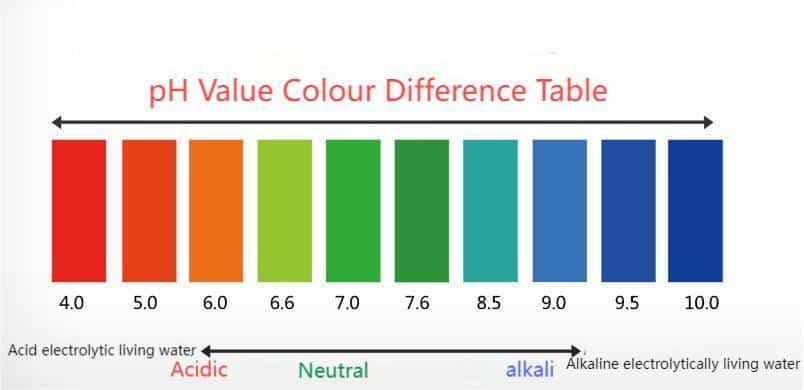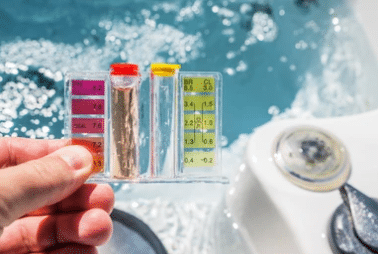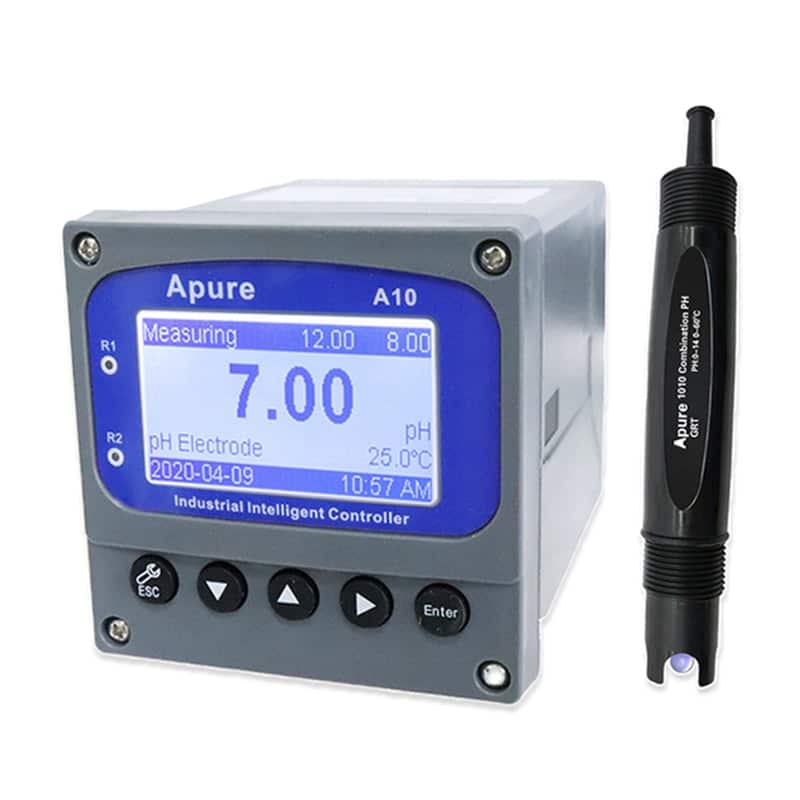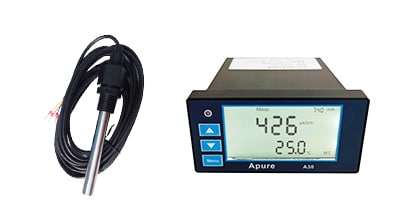Maintaining the perfect water balance in your pool ensures a safe, clean, and enjoyable swimming experience. One of the key components of this balance is alkalinity. High alkalinity levels can lead to cloudy water, scaling, and ineffective chlorine, making it essential to keep it within the recommended range. If you’ve tested your pool water and found the alkalinity too high, don’t worry—there are effective ways to bring it down.
What is alkalinity?
Alkalinity is a measure of the ability of water to neutralize acidity and is usually expressed in terms of calcium carbonate (CaCO3) per liter (mg/L). The higher the alkalinity, the greater the water’s ability to neutralize acidity. It usually indicates the concentration of ions in the water that can accept protons (H⁺) and consists mainly of ions such as bicarbonate (HCO₃-), carbonate (CO₃²-), and hydroxide (OH-). Alkalinity is an important parameter of water quality and is widely used in water treatment, environmental protection, and chemical analysis.

Alkalinity measurement
Alkalinity is usually determined by titration. A common titrant is a standard acid solution, such as hydrochloric acid, and the alkalinity of the water sample is determined by titrating the acid until all the alkaline substances in the water sample are neutralized. The measurement is usually expressed as the concentration of calcium carbonate.
- pH 8.3: This is the alkalinity of the bicarbonate (often called “phenolphthalein alkalinity”).
- pH 4.5: This is the total alkalinity, including bicarbonate, carbonate, and hydroxide (often called “total alkalinity”).
Types of alkalinity
Bicarbonate alkalinity: Contributed mainly by the HCO₃- ion.
Carbonate alkalinity: Mainly contributed by the CO₃²- ion.
Hydroxide alkalinity: Mainly contributed by OH-ion.
Importance of alkalinity
- Protecting aquatic life: Many aquatic organisms are sensitive to changes in pH. Alkalinity can help buffer the pH of water from becoming too acidic or alkaline.
- Prevent corrosion: Alkaline water can help prevent corrosion of pipes and other infrastructure.
- Neutralize wastewater: Alkalinity can be used to neutralize wastewater from industrial and municipal sources.
How do alkalinity and pH interact?
The higher the alkalinity, the higher the pH of the water. This is because alkalinity absorbs hydrogen ions (H+), which reduces the concentration of H+ in the water, resulting in a higher pH. Conversely, the higher the pH, the lower the concentration of H+ in the water, and the easier it is for the alkaline substance to react with the H+ and consume the alkalinity.
Factors of excessive alkalinity
Chemical treatment agents: Alkaline chemicals (e.g., sodium hydroxide NaOH, sodium carbonate Na₂CO₃) are sometimes added during water treatment to adjust pH or for softening. These chemicals increase the alkalinity of the water.
Disinfection by-products: Certain disinfection by-products (e.g., hypochlorite) can increase water alkalinity, especially in drinking water treatment.
Agricultural activities: The application of carbonate-containing fertilizers (e.g., lime) and the use of groundwater for irrigation that contains high alkalinity can increase the alkalinity of soil and surface water. As rainfall or irrigation water infiltrates, these alkalis enter the groundwater or surface water.
Industrial discharges: Certain industrial processes produce wastewater containing alkaline substances, such as papermaking, tanning, electroplating, and chemicals. These wastewater, if discharged directly without treatment, can lead to high alkalinity in water bodies.
Municipal drainage: Municipal wastewater may contain alkaline detergents and chemicals that increase alkalinity when discharged into water bodies.
Groundwater: Groundwater passes through strata containing carbonate minerals and absorbs alkaline substances, resulting in increased alkalinity.
Effects of Excessive Alkalinity
Reduced effectiveness of disinfectants: When the pH value is too high, the disinfecting effect of commonly used chlorine disinfectants (e.g., sodium hypochlorite) will be significantly reduced, resulting in ineffective control of germs and algae in the pool water.
Turbid water: High pH will cause metal ions (e.g., iron, copper, manganese) in the water to precipitate, causing the water to become turbid and affecting the clarity of the water.
Scale formation: High alkalinity and high pH will promote the formation of scale. It adheres to the pool walls, pool bottom, and pool water circulation system, making it more difficult to clean.
Health effects: High alkalinity pool water may cause discomfort to swimmers, drying out their skin and causing itching and discomfort; it can also irritate the eyes, causing redness and stinging sensations.
How to test the alkalinity of the pool?
Use test strips: This is the easiest and least expensive way to test your pool’s alkalinity. You can purchase test strips at most hardware stores or pool supply stores. To use the test paper, dip it into the pool water for a few seconds and compare it to a color chart. The color will indicate the alkalinity level of the water.


pH/Orp sensors: pH/Orp sensors measure the pH of water, which is a measure of its acidity or alkalinity. The higher the alkalinity, the higher the pH. pH sensors are typically used in swimming pools and aquariums, but can also be used in other applications such as industrial process control and environmental monitoring.
Conductivity sensors: Conductivity sensors measure the conductivity of water, which is a measure of its ability to dissolve ions. The higher the alkalinity, the higher the conductivity. Conductivity sensors are commonly used in industrial process control and wastewater treatment.

Optical sensors: Optical sensors use light to measure the properties of water, including its alkalinity. Optical sensors are typically used for non-contact measurements, which may be useful in certain applications, such as monitoring the alkalinity of a river or lake.
Ion selective electrode (ISE): The ion selective electrode is a sensor designed to measure the concentration of specific ions, such as calcium (Ca2+) and magnesium (Mg2+) ions, which are the major contributors to alkalinity. These ions are the main contributors to alkalinity.ISE is commonly used in research and industrial applications.
How to lower alkalinity in pool?
Maintaining the proper chemical balance of pool water is critical to ensuring the safety, sanitation, and comfort of swimmers. Therefore it is very important to reduce the alkalinity of your pool water promptly. Here are some ways and steps to reduce pool alkalinity:
Use of acidic chemicals
The use of acidic chemicals is the primary method of reducing pool alkalinity. Commonly used acidic chemicals include hydrochloric acid (HCl) and dry acid (sodium bisulfate, NaHSO4).
Test the water: Measure the current alkalinity level using an alkalinity test kit (e.g. titration reagent kit or digital tester).
Calculate the amount of acid needed: Based on the measurements and the amount of water in the pool, calculate the amount of acid to be added. Generally, each gallon of hydrochloric acid added will reduce the alkalinity of 10,000 gallons of water by approximately 50 ppm.
To add acidic chemicals: pour the acid slowly into deeper water, making sure the pump is running so that the acid is evenly distributed. Be careful not to add too much acid at once to avoid dropping the pH too quickly.
Retest: Wait a few hours and test the alkalinity and pH again. If the alkalinity is still too high, repeat the above steps.
Air aeration
Air aeration is a much gentler method of reducing alkalinity by increasing the carbon dioxide content of the water using fountains, jets, or pumps. This method is slower but does not drastically affect the pH.
Partial water change
Partial water changes are also an effective way to reduce alkalinity by draining some of the high-alkalinity pool water and adding low-alkalinity supplemental water. This is especially useful if the alkalinity is extremely high and other methods are not effective. Finally, re-test the alkalinity and pH levels and make minor adjustments with acidic chemicals if necessary.
How do you lower the alkalinity without affecting the pH?
- Ion exchange: Ion exchange is a process that uses resins or other materials to remove specific ions from water. By selectively removing alkaline ions such as calcium and magnesium, the alkalinity of the water can be reduced without significantly affecting the pH.
- Reverse osmosis: Reverse osmosis is a process that uses a semi-permeable membrane to remove dissolved impurities from water. Reverse osmosis removes all dissolved ions, including alkaline ions, thereby lowering the alkalinity and pH of the water. However, remineralization of the reverse osmosis treated water is often required to keep the pH within acceptable limits.
- Acid washing: Acid washing is a process that uses acid to neutralize the alkalinity of the water. Acid washing is effective in reducing the alkalinity of the water but results in a significant decrease in pH. Alkalization of the acid-washed water is often required to maintain the pH within acceptable limits.
Summary
Regular testing and adjustment are key to preventing high alkalinity levels and ensuring your pool remains in excellent condition. By following the steps outlined in this blog, you can effectively manage your pool’s alkalinity, leading to clearer water, better chlorine efficiency, and a more enjoyable swimming experience.
Ready for an easier pool maintenance experience? Then it’s time to experience the convenience of your pool with the purchase of APURE products. Our products make it easier for you to test and treat your pool and keep your water clean for your next party or a relaxing afternoon. You can browse our website to learn more about common pool water problems so you can better cope with the challenges that come with owning a pool. If you’re already an Apure product owner, we have the extra supplies you need, such as flow meters, level measurements, temperature measurement, and ozone generators. With these you can keep your water balanced and enjoy the whole process.
